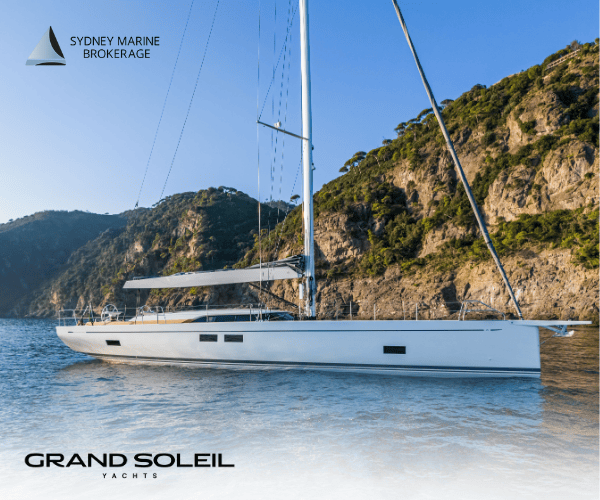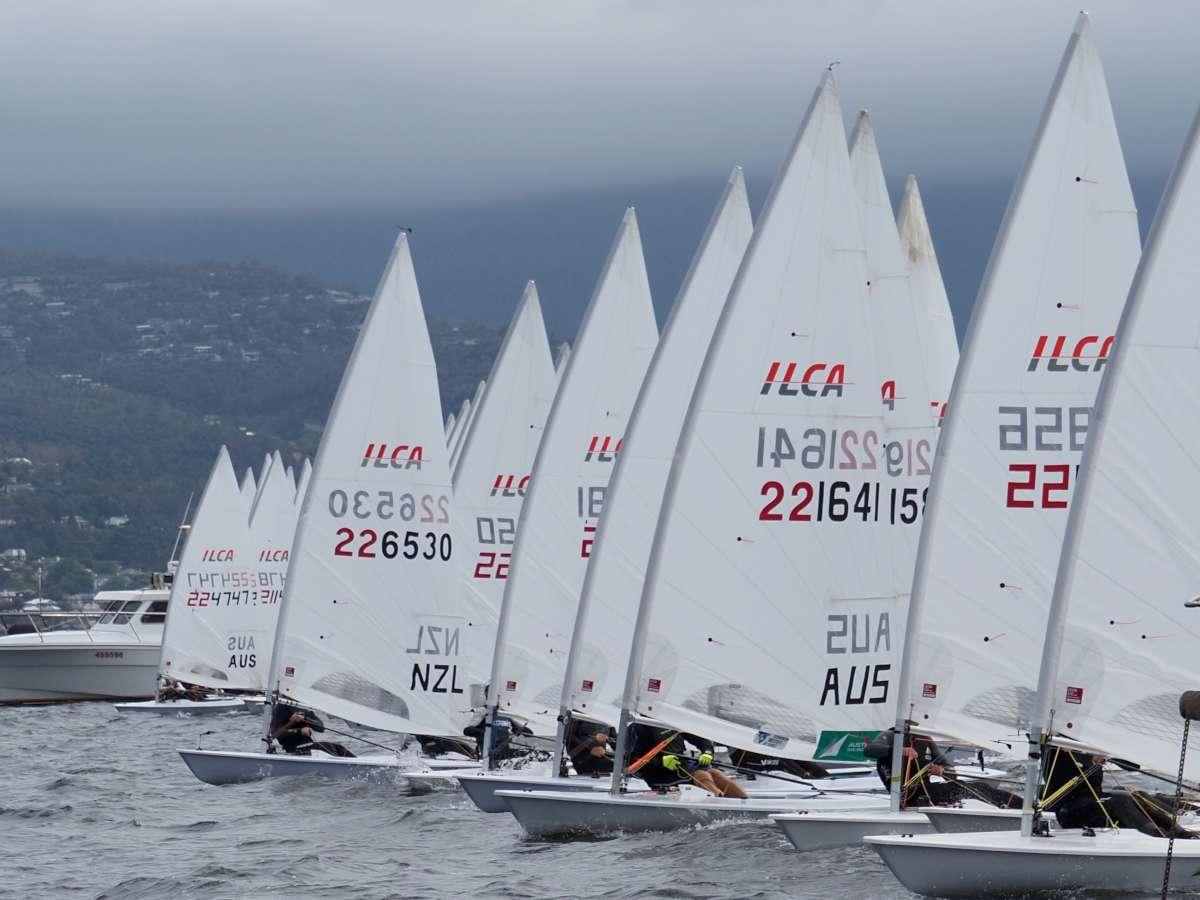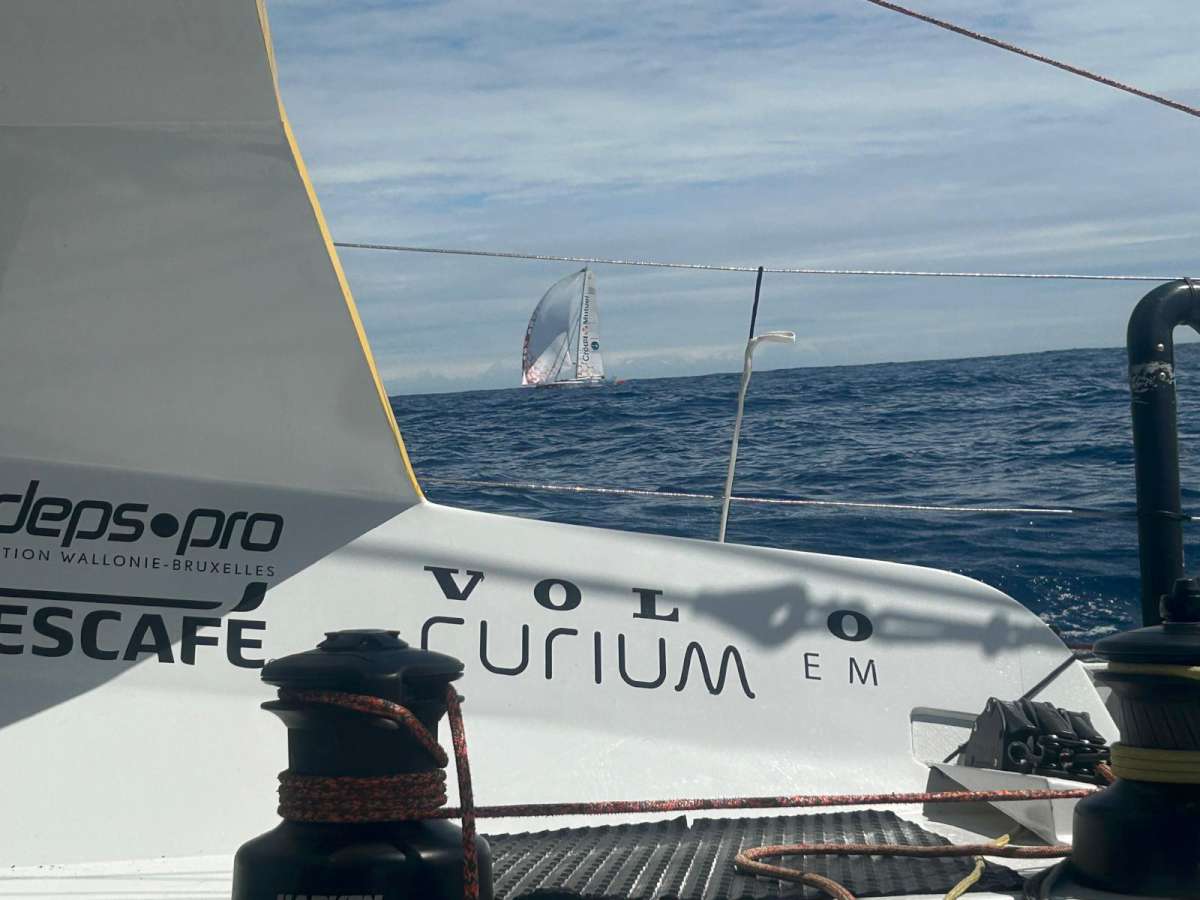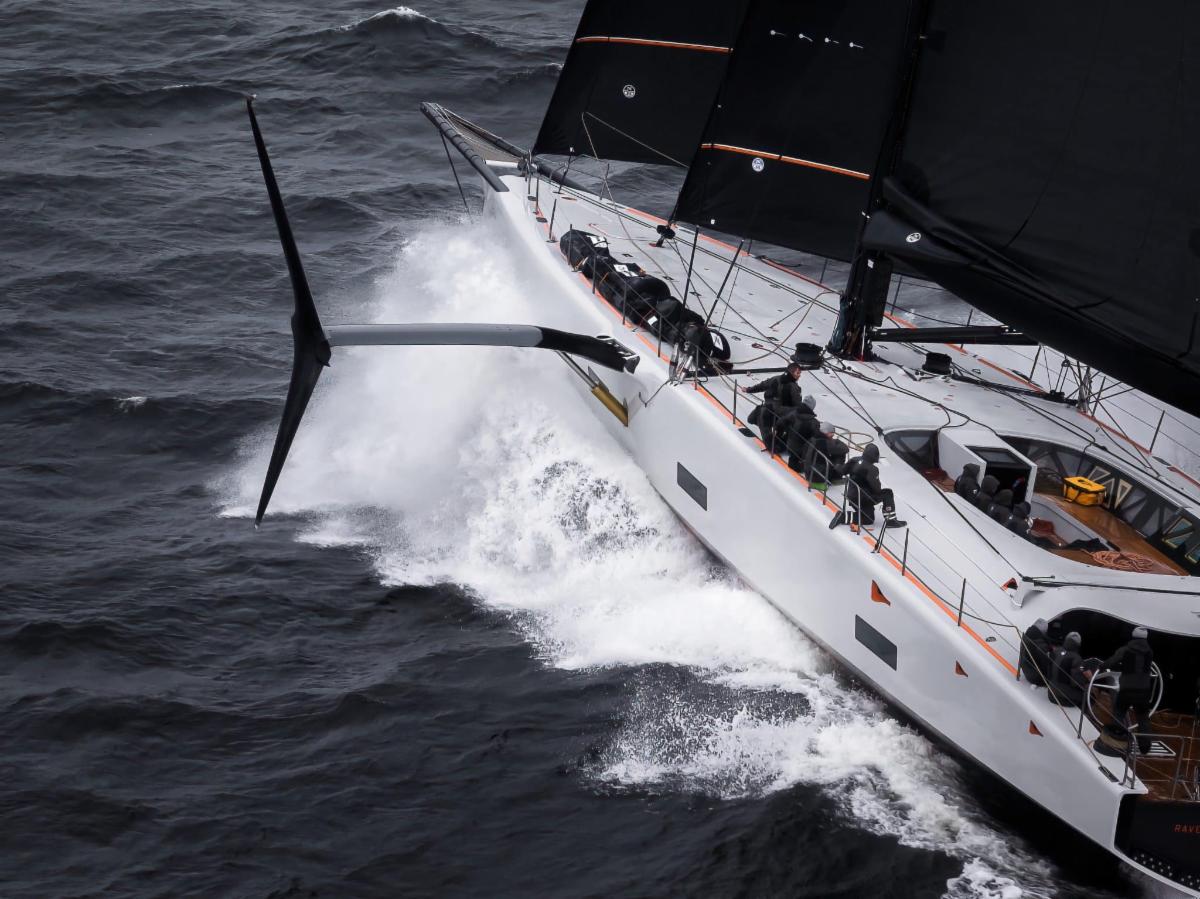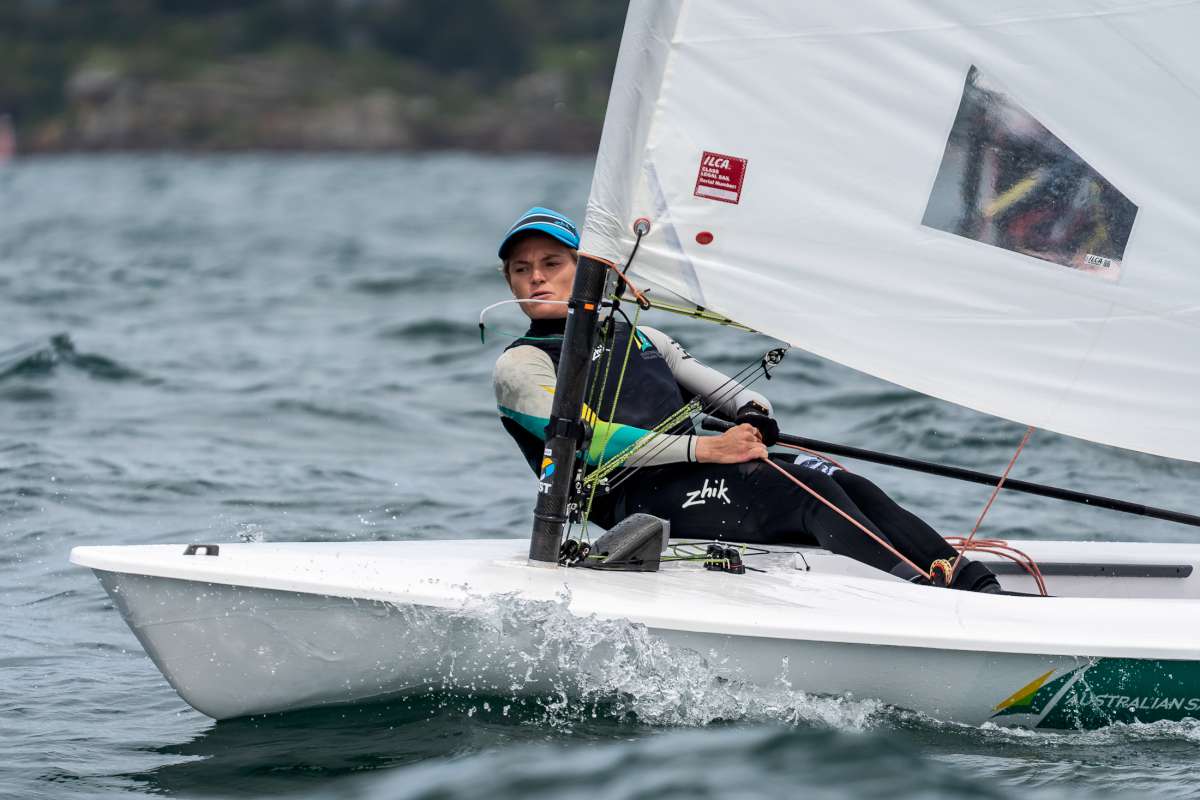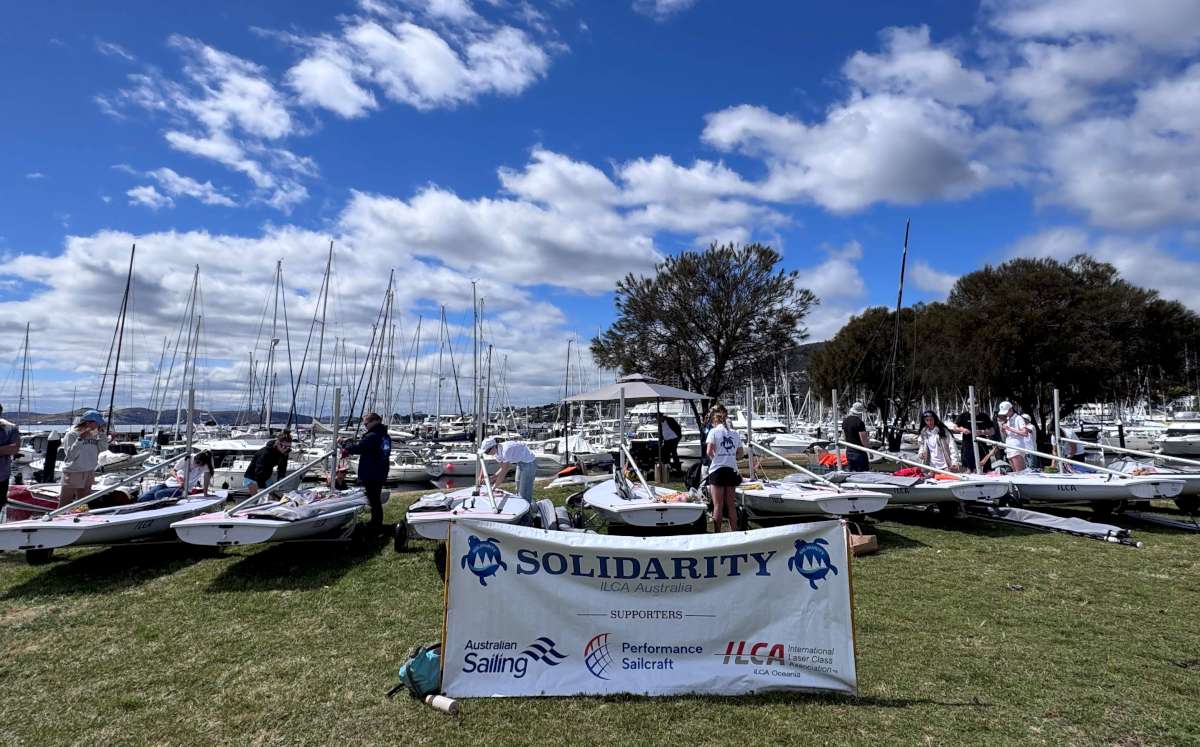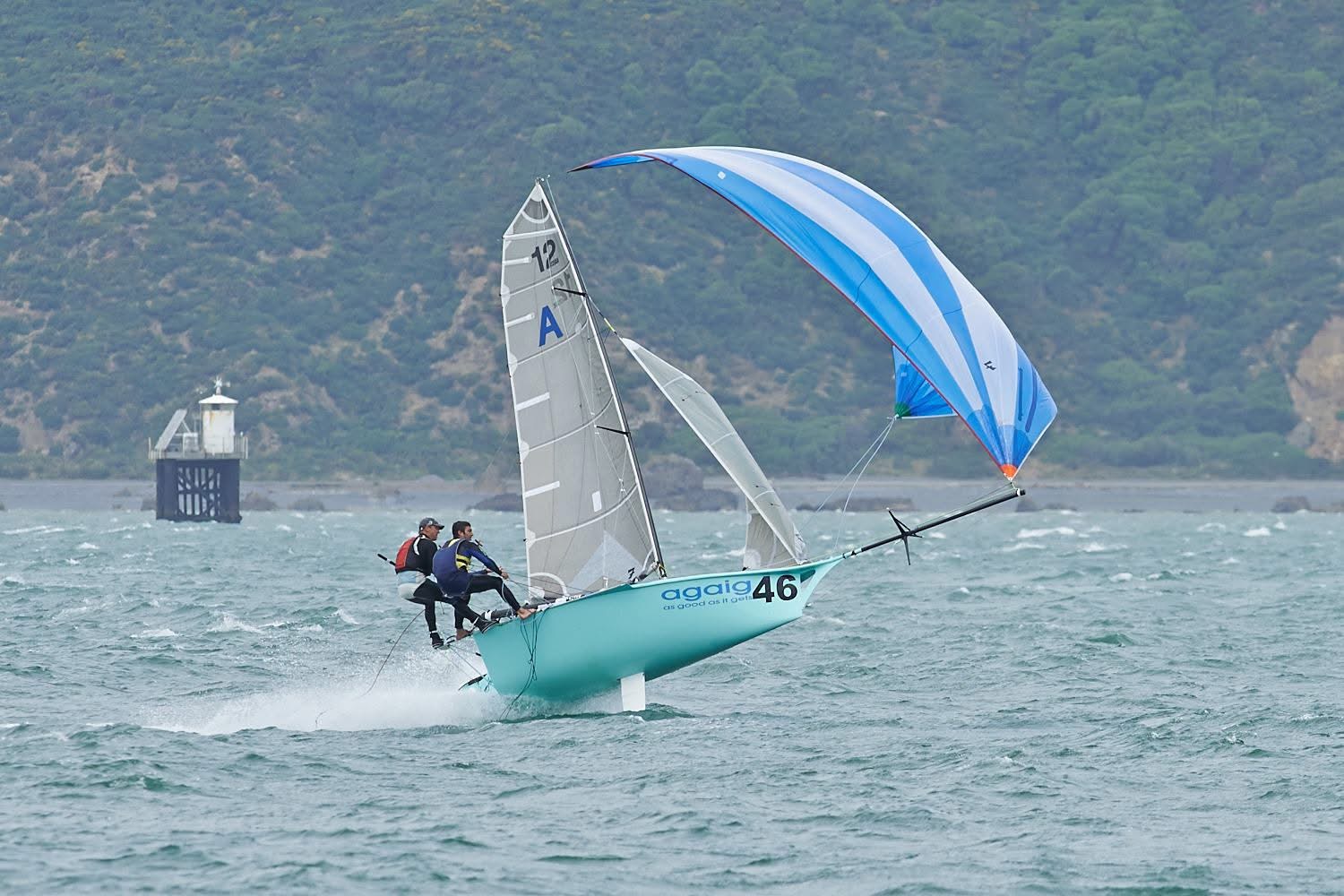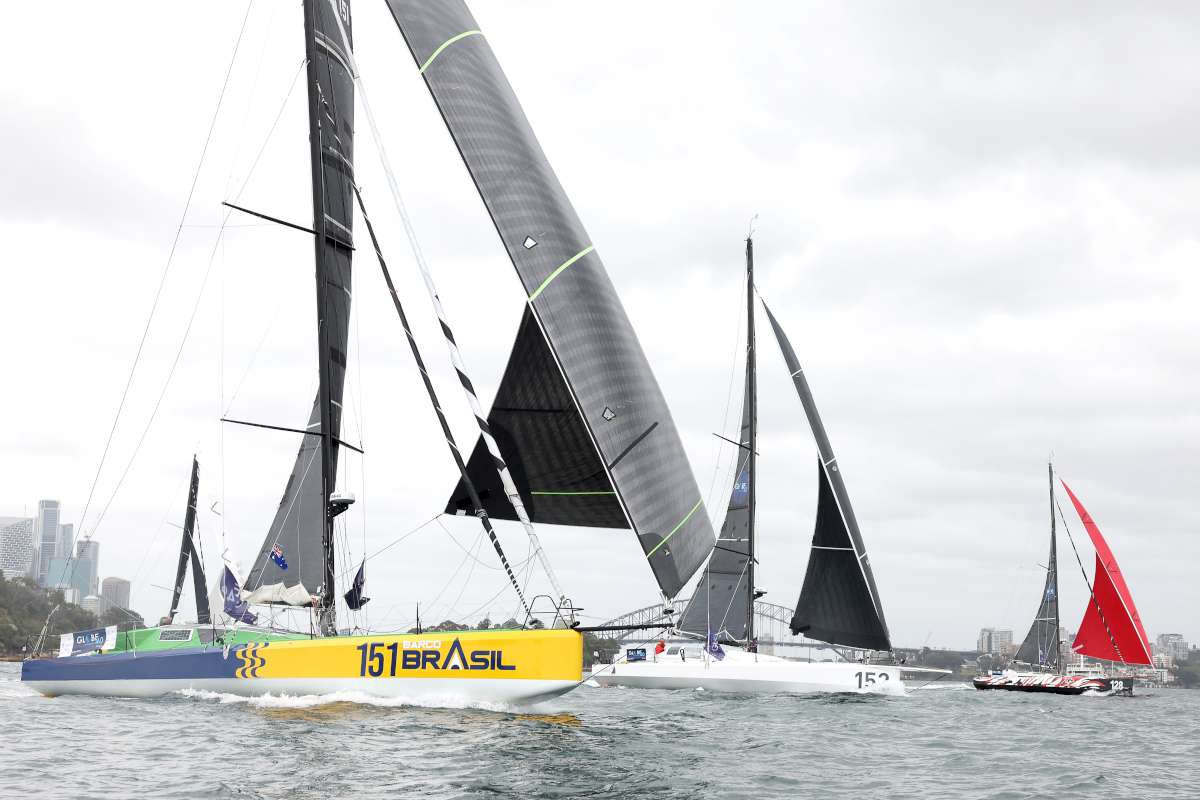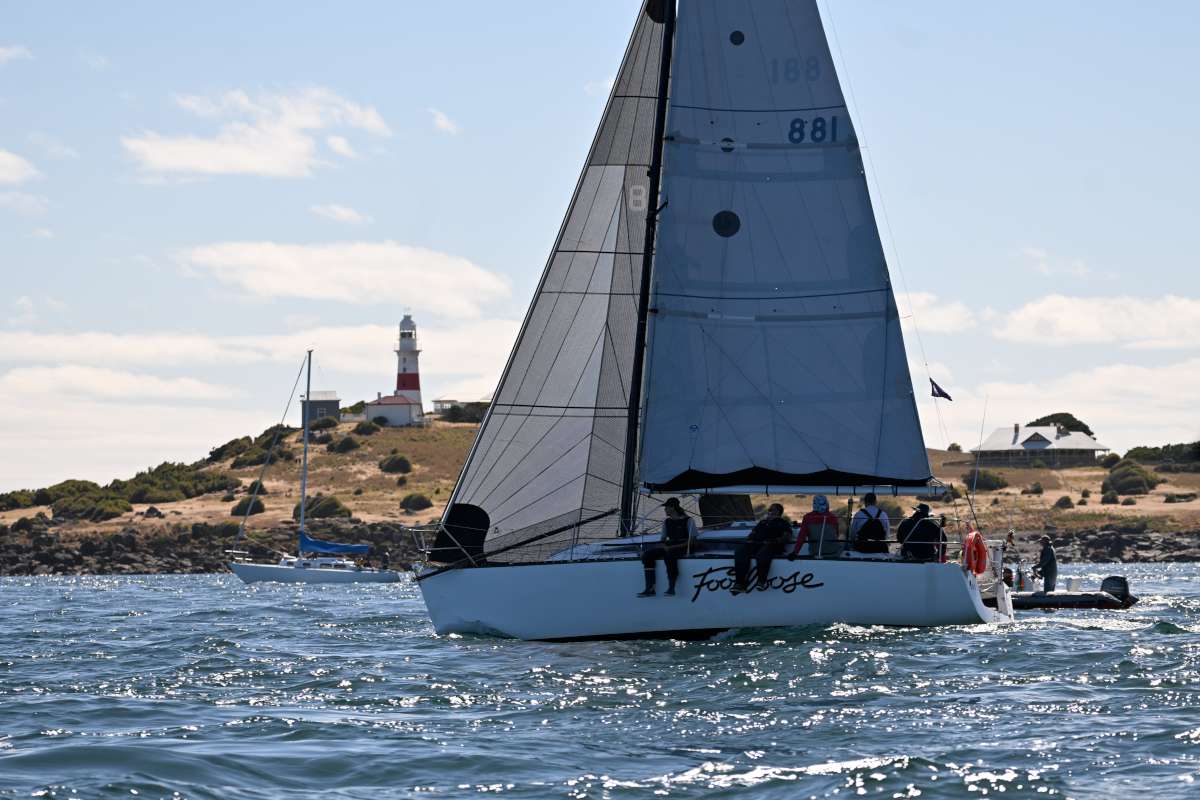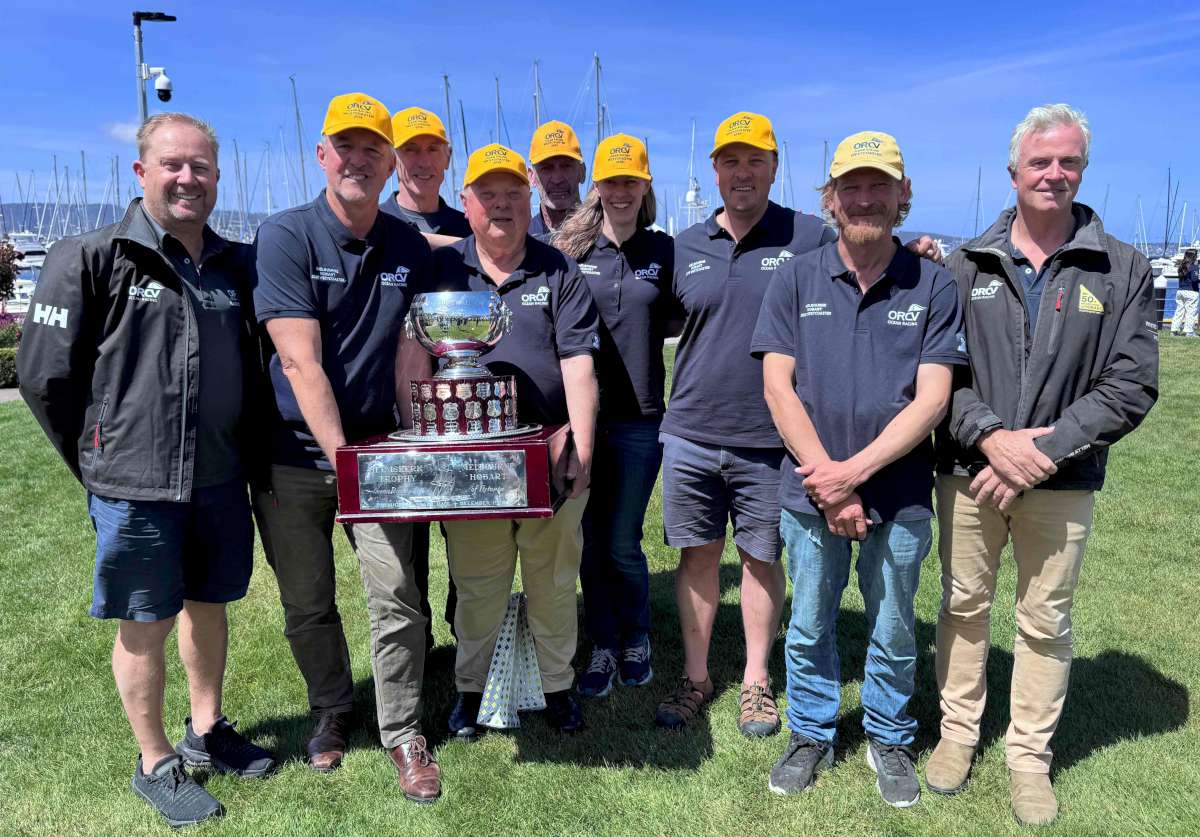“Aruba, Jamaica, ohh I want to take ya, Bermuda, Bahama, come on pretty mama, Key Largo, Montego, baby why don’t we go to the Kokomo …”
The Beach Boy’s 1970s lyrics were what put Cocos Keeling in our sights. As we sailed south towards the small island dependency of Australia, I kept singing the song and imagining us bound for the kind of island that songs and dreams are made of. “Ohh I wanna take you down to Kokomo. We’ll get there fast and then we’ll take it slow…” and that’s exactly what we intended for our two weeks in paradise.
That’s where we want to go
That said, I know the actual song had nothing to do with Cocos Keeling per se and I have yet to find out what the Kokomo actually is. Regardless, heading for an island oasis in the middle of a large ocean was enough of a similarity; the palm trees would sway under white sand beaches, the waters would shimmer cool and invitingly and I could almost taste the rum on my lips.
What I did not foresee was the gale that preceded us that cast the island in a blanket of grey. But even the regional storm that typically shrouds everything in muted colours could not dampen the vibrancy that defines this idyllic tropical island getaway.
In all the damp greyness that surrounded us, even the deepest shadow cast by the clouds was not enough to dampen the hues of bright blue that reflected off the water. As soon as the clouds moved past, this place would pop in electric layers of colour and I knew that we had landed what many cruisers seek out in their travels: a slice of island heaven.
Of course, history tells that we are not the only ones who have chosen this place as a sailor’s Mecca. The island’s earliest history is the stuff movies are made of, though perhaps only appreciated by those with a twisted sense of humour.
Cocos Keeling was first settled by an Englishman by the name of John Hare in 1826, who visited earlier in his career and determined it was prime real estate. On retirement he returned with a harem of forty women to see out his final years in the uninhabited and unclaimed island oasis.
His plans were thwarted a few years later with the arrival of John Clunies-Ross and his motley crew. It took little time for the women to see the opportunity and defect. Tensions ran high between the two former associates and Clunies-Ross, wielding more manpower, banished Hare to an adjacent islet shortly thereafter.
Marooned and abandoned Hare managed to escape and fled back to civilisation, but died several years later dejected and alone. Clearly, his Kokomo eluded him. Cocos Keeling did not provide John Hare the stuff songs and dreams are made of after all. The same was almost said of us.
We’ll put out to sea …
Like John Hare, our decision to come to Cocos Keeling held its own comedies and dramas. Coming in between squalls, we found it difficult to find the entrance to the small lagoon off Direction Island, the designated anchorage
for visiting yachts.
After struggling over the previous 24 hours to make any headway, we finally reached the island only to be cut off from our anchorage by a line
of coral that stretched across the lagoon.
The entrance was marked by directional marker buoys, but it was hard to see any way over the reef. After scratching our heads and spinning ¯Atea in circles for half an hour, the threat of another squall pushed us to make a decision. I donned mask and snorkel, jumped in with a splash and guided us over the reef by sight. The anchor was finally laid out and we breathed a sigh of relief. We were in, unscathed.
I jumped around deck, counting the black tip sharks that patrolled beneath our hull and the yachts that joined us in the marina: six. Having neighbours was totally unexpected. Coming from Asia we were well behind any of the yachts transiting the Indian Ocean this year. We soon realised we had hit a totally different cycle of cruiser: those crossing due west on a southern route on a shorter timeframe.
About half an hour after arrival the police called us on the radio signalling they wanted to come alongside to clear us in, making protocol easy by coming to us directly. Relief. We would be spared the hassle of tramping around an unknown country trying to find the officials to clear in.
They promptly pulled up and tied off our port side, but with difficulty. The squall had brought strong winds that churned up the sea and the vessels jostled against each other. I stated my concern about two steel hinges on the rib but the captain and police official dismissed my apprehension. This was standard procedure.
What standard procedure did not protect us against, to our dismay, was pilot error and atypical sea conditions. Halfway through clearance the vessels turned side on to the waves and a gut-wrenching bang, bang, bang rang through our ship. We were left with two softball-sized dents in the side of our hull.
Lesson number one: always listen to your instinct, regardless of the size of the badge on someone’s hip.
Lesson number two: Always follow protocol when entering a country. Particularly if that country is Australia and double that if this is your second offence.
Unfortunately I had forgotten that #1 I am not a New Zealand citizen and permanent residency in this case does not count; #2 I am travelling on an American passport and needed a visa to enter Australia and, #3, I have memory failure at the least opportune moments and the fact that I’d overstayed my visa once before was a distant, forgotten memory. But we did not know any of this yet. We found out about lesson two a week later, via the threat of a $5000 fine.
I want to take you down
There is nothing quite like an unexpected visit from the Australian police. It is not an experience I would recommend and not one I’d like to repeat.
A few days after arrival we were called on the radio by the police and asked if all parties were onboard with passports on hand. An odd enquiry; I could not imagine what they were interested in. But, nonetheless, the question left me feeling uncomfortable.
An hour later we were boarded and I was asked if I could be spoken to in private and that the conversation would be videotaped and my statement recorded. I managed to squeak out my consent.
Police: “Excuse me ma’am, you are in
violation of Australian border security on a visa infringement. Are you aware of this?”
My pulse quickened: “What?”
Police: “Headquarters in Canberra have informed me that you have entered the country without a valid permit and are currently being investigated for violation of border security. Are you Kia Koropp and can you confirm that this is your passport?”
You find it hard to think, let alone speak, in moments like these and so one word answers was all I could manage. “Yes. Yes.”
Police: “Is this an American passport?”
Feebly, “Yes.”
Police: “Do you have a visa to enter Australia or an Australian territory in this passport?”
At this I started to sweat. “No …?”
Police: Have you ever been questioned about a violation of border security in the past?”
Memory and eyes go blank. “What? Definitely not.”
With my nerves shaken and eyes flickering between video recorder and clean-shaven cop, my shaky interrogation continued. While the Australian police have a fierce reputation, the kind who opts for a cushy job in a small island community and rides around on a bicycle to keep a paternal eye on a benign, close-knit community does not fit the mould. Guided through the remainder of the interrogation
with winks and soft suggestive prods, the rest
of the conversation went something like this:
Police, out of sight of the camera eye: “Yes. Well I understand you left Sumatra without adequate provisions for the duration of your stay in Chagos?” Wink wink. “And you may have been concerned with the welfare of your child and, being in need of medical facilities, had to unexpectedly reroute to Cocos.” Wink wink. “And that storm, whoa! That storm was fierce. There is no way you could continue on your course to Chagos as intended.” Wink wink.
In a moment like this you want to smile and cry and reach out to hug this random, warm-hearted stranger offering salvation and unbridled kindness. Continuing our empathetic exchange with an air of formality I was told that, while he believed in my innocence and would request that a formal warning be issued, he could only provide a recommendation and the offense could warrant a $5,000 fine. The decision would happen by an official removed from the scene in faraway Canberra, sitting behind a desk flicking through incoming e-mails in what I hoped would be a very good mood. For the moment we were told to sit tight, relax and enjoy our time in paradise.
Down to Kokomo
This was certainly not turning out to be the Kokomo we were expecting. Had Aruba and Jamaica been on this side of the world, we would have taken our entourage and our dreams elsewhere but, like John Hare, we were temporarily marooned; it had taken us a week to get here and our next destination was two weeks away.
Besides, what we needed next was a clinic and this was something Cocos Keeling could offer us. Ayla had picked up a rash on passage and some of the red spots had turned into welts that were spreading. Fortunately, the diagnosis was a benign skin infection called impetigo and curable with a week of medication.
We also got Braca’s HBA1C test done, indicating his blood sugar control over a three-month period, which gave us reassurance we were managing his diabetes responsibly. Unbeknownst to us at the time, the record of our clinic visit would provide us a significant lifeline when it came to dealing with Australian immigration over my visa infringement.
Fortunately we had already gotten a glimpse of what Cocos had to offer and we were charmed, so hightailing it out of the country was not under consideration. Regardless of a string of upsets, this was going to be a fantastic destination and it did not take me long to put my infringement concerns on the sidelines. We had found what the Beach Boys promised us and we were going to live the lyrics:
“That’s where you wanna go to get away from it all, Kokomo
Bodies in the sand
Tropical drink melting in your hand
We’ll be falling in love to the rhythm of the steel drum band
Down in Kokomo …”
We spent days counting black tip reef sharks that made a daily pilgrimage around our boat, watching the dolphins spin under the spread of mid-afternoon rainbows and smiling at the large sea turtles that lazily idled by.
Social engagements with other cruisers included sundowners and rowdy, raucous games in the cockpit. We built bonfires on the beach at sunset, shared meals on the spit ashore with an island-style fare of barracuda and mahi-mahi thrown on the barbeque served with heart of palm torn from the root of fledgling palm trees. Then we washed it all down with the rich water from freshly-cracked coconuts.
We were living the Kokomo, Coco-style. We had it all, ukulele and percussions included. All we were missing was the steel drums.
Every day was marked with an afternoon snorkel, a swim off the beach and the slow pace of island living.
It did not take us long to register that we had changed cruising seasons with the transit between the northern and southern hemisphere and, in doing so, we had hooked into a completely different pattern of climate, of environment and of cruiser person.
Instead of being hot, humid and windless as it was in Asia, the climate here is slightly cooler with constant tradewinds. The water temperature dropped from 32 degrees Celsius to 25°C and the air temperature dropped with it. We started wearing clothes onboard again and sleeping under sheets, a novel change brought by the cool breezes of the southern tradewinds.
The environment is now cleaner and less spoilt and more protected. This is a function of the Australian enforcement, which comes with strict regulations in place to protect the environment. This is evident in the clarity of water, the cleanliness of the shores and the prevalence of shark and large schools of reef fish. While debris that flows south from Asia does filter through, the difference in the quality of
the environment both above and below the water is dramatic and so very rare to see.
Two weeks of ‘livin’ the Kokomo’ and I was back in front of the friendly police officer who, after inviting me to his wife’s playgroup and offering to collect and deliver me in his golf cart, broke the news: I had received a slap on a hand, a warning.
It seemed that my Canberra saviour had woken in tussled bedcovers, had her morning coffee made by a particularly charming barista delivered especially strong and hot and walked into the office that day with a spring in her step and a whistle on her lips. Or something like that. I was not going to be $5000 in debt, I was not going to be herded out of the island by a bicycle-peddling policeman and I would not be barred by force in any future entry down under.
We were now officially welcome guests of this beautiful Australian dependency.
Tropical contact high
And so, we officially started to explore beyond the captivating confines of the lagoon in which we perched.
The islands are positioned into two main groups: North Keeling is an atoll with a continuous coral reef enclosing a lagoon, South Keeling consists of an atoll with a reef connecting the various main islands around a large lagoon.
Yachts have one designated anchorage in the lagoon at the northern entrance of South Keeling. It is here on Direction Island that the cruising yachts are based and where most of the yachtie activity is centered.
The cruising guide states: “this is the only island in the world that is completely dedicated to cruisers.” In fact, the island is dedicated to the locals and holidaymakers that come from the inhabited islands surrounding it and not the cruisers specifically; however, all visitors are free to use the amenities as long as resources are used responsibly.
Ashore there is a water tank for rainwater catchment, covered picnic benches and tables scattered along the beachfront, swings and hammocks hanging from trees, bonfire pits and barbeque facilities. Coconut trees are inscribed with toilet signs to direct the user to the perch, complete with long drop. There is even the convenience of wi-fi and a telephone booth offering free calls to anyone in the islands.
All this is on offer for the nominal fee of AU$50 per week and, while some would complain at paying for a yacht swinging on her own anchor, who could complain about paying for a place with free local calls?
It was at this random payphone, placed conspicuously between palm trees, that I met Flo. Between tears and phone calls, I scraped together the unfortunate situation that this single Italian cruiser had gotten herself into. Joining as temporary crew on a Chilean yacht, she had developed a hostile relationship with the captain who had threatened to throw her from the ship mid-passage.
Clearly not an ideal situation as she and the skipper were looking at 1,700 miles to the Maldives in front of them. She was frantic to find accommodation ashore but none was available, so I took the opportunity to repay earlier kindnesses extended to me by strangers: I offered a safe haven.
She packed her bags and, by morning, we had acquired a new crewmember on Atea. It was a change of scene having someone onboard and we enjoyed the company, although it was a reminder of how tight a space our floating home becomes in the company of strangers.
Regardless, a beautiful friendship was made through an unexpected encounter, thanks to a random telephone booth tucked up in the oddest, most unlikely spot on Earth.
While Direction Island offers a cushy gig for the cruiser, the quaintness of Cocos stands out with its matching cookie-cutter houses and complimentary golf cart that line the identical cobbled brick streets of the five by five block town of nearby Home Island. Even the police station is quaint, with its single desk and single fan in a small one-room office with an officer offering us cookies from the small fridge that sits in the corner next to his bicycle and the police-marked golf cart parked out front.
Better still, we made our fee payment at the Shires office, which can only make one think of a sweet pointy-eared, hairy three-toed hobbit greeting you warmly with a lop-sided smile. I have come to think of it as the ‘Leave it to Beaver’ island of the modern-day world, a reference to the popular 1960’s American sitcom where everything is conventional in ordered suburbia. Home Island is about as quaint as a place can get.
Muslim descendants from Malaysia predominantly inhabit Home Island, with about two thousand residents on the small island. On the other hand, West Island, the only other island with a town to offer, has a few hundred Australian residents most of whom are on two to three-year governmental contracts.
The ethnic separation between the two islands is distinct and, clearly, there are large subsidies going to support the island group from Australia. Not only is this evident in the two, quaint provincial towns with identical houses lined like rows of Crayola pencils down neat cobbled streets, or the state-compensated golf carts, the library or local school.
On an island with little industry, it is hard to think of anyone being able to support himself or herself regardless of additional funding. Take shopping at the one-and-only grocery store on the island, with goods that arrive by plane twice a month and sold at exorbitant prices.
Fresh fruit and vegetables arrive every other Friday by plane from Australia and the villagers stand in a long line at the single cash register at daybreak Saturday morning for first opportunity to get fresh produce. If you are not there early, you have two weeks to go before you get the next chance to stock your cupboards. If looking for other things, good luck finding it at one of the three tiny one-room shops, all offering the same collection of cheap plastic toys and the same dusty tins shipped from India.
If you do happen to be first in line that second Saturday, you better be prepared with your monthly wage, o to offer up your first-born, or to take out a mortgage against your house: it is strategically impossible to leave with a good supply of food and still have money in your bank account.
A small box of basics runs to no less than $400 and does not include wine and cheese. In fact, all the cheese in the chiller expired months ago and the only wine offered on the island is alcohol-free. So, when I speak of a box of basics that is exactly what I mean: a handful of onions, a box of crackers, powdered milk and a packet of noodles. Basics.
Now, come that second Friday, there is the option of fresh greens. But that will cost you. In fact, in two weeks it cost us $1000 yet we arrived at the island fully provisioned.
What I was able to acquire cost us dearly: $30 for a dozen tomatoes, $25 for a handful of carrots, $40 for five cartons of eggs. Unfortunately the $16 for two head of lettuce, the $6 per capsicum, $10 for a small Ziploc bag of green beans, $15 for half a small broccoli and half a cauliflower had to be left at the counter because the solar-run wi-fi was down for the week and we could not transfer extra money into our account.
We shopped in Sumatra for a two-month provisioning at a fraction of the cost and left fully-stored with every fruit and vegetable imaginable. We were going to eat like royalty in the uninhabited archipelago, sipping our passionfruit/pineapple piña coladas at sundown, crunching through our Cobb salad for lunch and enjoying a fresh fruit medley for breakfast. With the extension of the additional weeks in Cocos and restrictions on reprovisioning, our dial may be pushed toward empty during our time in Chagos. Fingers crossed, we learn to fish.
One trademark of Cocos comes from her position on the map. At 12°S latitude, the little island group sits in the middle of the southeast trade winds, receiving strong consistent winds and thereby making it an ideal destination for those addicted to wind-on-water sports.
For us, that means kite surfing. That is, it should have meant kite surfing, had our kit not been curled up to melt in the bags during our last few seasons in the sweltering tropical heat of windless Asia.
As a result, our kites could not offer us a play in the 20 knot wind that beckoned us. Each day John sat under the palms swaying in the breeze hunched over tubes and pumps and repair kits, attempt after failed attempt to repair each split seam. I looked on towards the picturesque horizon as our French sailing mates soared backward and forwards under the spread of their leak-less kite, hearing our old chant of “if only we could find a spot where the water was warm, the breeze steady and the lagoon flat and empty…” and kicked myself for, yet again, equipment failure at the least opportune moment.
Since we could not play on top of the water, we spent our days in it. Given the health and richness of the underwater environment, protected as a marine reserve, there was little for us to complain about.
The snorkelling was superb for the clarity, the corals and the life. Gray, black and white tip reef shark abound and proved reliable swimming companions; as did the large schools of hump-head wrasse and parrotfish, so thick in number that I could dive down and reach out to tickle their underbellies.
There were grouper the size of my four-year old son, butterfly, trumpet and clown fish, flirtatious rather than shy, snapper and trevally for hook and sinker and an afternoon braai and large-mouthed clams and umpteen spongy sea cucumbers to serve on the side. Dolphin often came into the lagoon to swim around the resting yachts and several sea turtles poked around inquisitively.
The kids leaped forward in their swimming skills; with Braca and Ayla swimming underwater unassisted by parent or float. Both found a love of snorkelling, we would poke around the reef each day curious and playful in the rich aquatic wonderland.
There was a rip that we often returned to with current running through it at three knots. We would take the dinghy with the outboard full tilt up to the top of the channel and jump in, holding onto the painter and drift through the pass, our mouths agape and eyes batting around wildly trying to take it all in. Braca and Ayla kicked alongside us, no idea how truly spectacular the experience was but excited all the same about the sharks resting under the ledges and the myriad of fish that surrounded us.
For such a small, isolated spot on the world map, Cocos Keeling has delivered us an extraordinary time full of new charms and unexpected surprises and it is hard to say goodbye to this uniquely charming atoll. From here, we resume our thrice-revised itinerary and head for Chagos, where I expect to find a myriad of new delights.
However, regardless of the new adventures that lay ahead, it is hard pull our bodies from the sand, leave behind the steel drum band and put down the tropical drink melting in my hand …
Please note
If you are the Australian police, border control or, for that matter, any governmental agency, this essay is for entertainment purposes only. No passage is to be taken literally and no statement can be used against me in a court of law.
If in the future I should be under investigation for any reason involving entering or leaving the country, I would like to officially state that, en route to Chagos, there were three crucial and unforeseeable reasons to divert: the weather was gale force 8; both Ayla and Braca are on record at the clinic on Home Island; and we were desperate for a few blocks of Cocos-expired cheese. ≈




